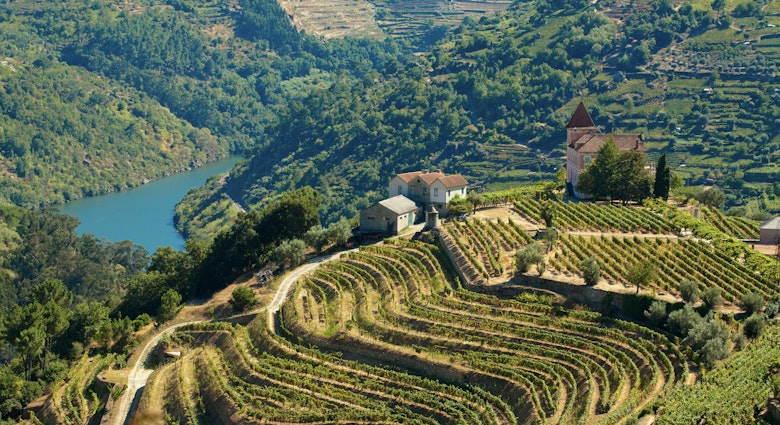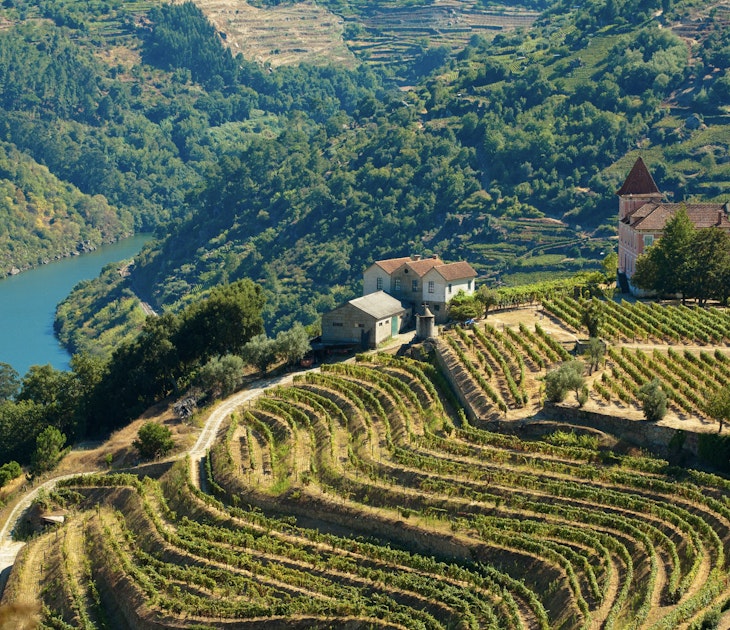
How to get around Porto (and enjoy the views along the way)

Nov 29, 2024 โข 5 min read

ฑสดวฐ๙ณูดวโs metro whisks locals and visitors around the city โ and across the iconic Dom Luรญs I bridge. Shutterstock
Hills, bridges and the glittering expanse of the Douro River make Porto a famously scenic place โ and one that can be challenging to get around.
Luckily, the city has an excellent transportation network, from a speedy metro system to old-fashioned trams, along with buses, taxis and even a funicular thrown in for good measure.
ฑสดวฐ๙ณูดวโs compact city center is ideal for getting around on foot, particularly in the narrow lanes of the Ribeira, where transport is lacking. And if you want to reach the far-flung corners of the city, youโll have plenty of options to get you there.
ฑสดวฐ๙ณูดวโs transportation network is quite efficient yet can have its snags โ so give yourself ample time to get to where youโre going. Hereโs what you need to know.
Travel from the Middle Ages to the 21st century on the metro
Strolling up the medieval alleys of the Ribeira district, you can hop on the metro and head up to the Casa da Mรบsica, Rem Koolhaasโ cutting-edge 2005 architectural masterpiece. ฑสดวฐ๙ณูดวโs six lettered and color-coded metro lines offer many ways to hop across centuries while exploring diverse corners of the city.
We recommend familiarizing yourself the most useful lines. Line E (violet) travels from the airport to the city center; line D (yellow) has the nearest stop to the Ribeira (Sรฃo Bento station), and travels over the Dom Luรญs I bridge to Vila Nova de Gaia. Line B (red) is ฑสดวฐ๙ณูดวโs longest line, running from Estadio do Dragรฃo (home to FC Porto) north to village-like settlements near the seaside. And a , running through ฑสดวฐ๙ณูดวโs historic center, is set to open soon. Trains operate from 6am to 1am daily.
Get a better look at city neighborhoods on the bus
ฑสดวฐ๙ณูดวโs extensive bus network can take you just about anywhere you want to go. Youโll also get to enjoy views of the city โ its architecture and plazas, as well as its long-legged dogs and their minders โ that you wonโt see on the metro. There are many lines that are particularly handy for sightseeing, including , which takes you to the fabulous art complex Fundaรงรฃo de Serralves, with stops along the way near the Soares dos Reis Museum, the Palรกcio de Cristal gardens, the and other places of interest.

Take in ฑสดวฐ๙ณูดวโs best views aboard the Telefรฉrico de Gaia
Itโs only a five-minute ride. Yet the Telefรฉrico de Gaia delivers sweeping views over the Douro and the red roofs of ฑสดวฐ๙ณูดวโs fabled winemaking factories. Traveling the short distance between the Vila Nova de Gaia waterfront and the southern end of the Dom Luรญs I bridge, the aerial cable car makes a good add-on to a day of port-tasting at the wine lodges in the sister city that fronts the Ribeira. The upper station is just a few steps from the above-ground Jardim do Morro metro station. The one-way fare is โฌ6 (โฌ9 return); the ณูฑ๐ฑ๔ฑ๐ดฺรฉฐ๙พฑณฆดว runs from 10am to 8pm during the warmer months, with service ending an hour or two earlier from late September to late April.

Take a nostalgic ride on the No 1 tram
Nรบmero Uno is the perfect digit for ฑสดวฐ๙ณูดวโs cheerfully painted tram, which trundles along the waterfront. This photogenic and quite slow star of ฑสดวฐ๙ณูดวโs transport network has been carrying passengers (as well as fish, coal and other things) since the 1870s, when it was initially pulled by mules. Though now electrified, the tram only moves marginally faster than back then, providing a fascinating window into the past. The tramsโ interiors are kitted out with vintage wood paneling and oversized windows you can open high to maximize those breezy views.
runs between Ribeira and Passeio Alegre, which is about a 10-minute walk from the beaches of the Foz do Douro. Purchase your tickets โ โฌ3.50 ($3.70) one-way; โฌ6 ($6.34 round-trip) โ directly from the driver.
Pick up an Andante Card to ride the metro and buses with ease
You can access ฑสดวฐ๙ณูดวโs integrated bus-and-metro network with ease by purchasing an , which comes in various forms. If youโre just planning a few trips while youโre in town, buy an Andante Blue Card and load it with credit. Thereโs also an โ a better option if you plan to do a lot of traveling on the network over a short period of time: a 24-hour card costs โฌ7.50 ($7.93) and a 3-day (72-hour) card is โฌ16 ($16.92).
You can purchase cards at tourist information offices in the airport and in town, as well as at various metro stations. Note that the tram and funicular are not covered by the Andante Card.

Ride the funicular for lofty bridge views
Hilly Porto has just one inclined rail line โ and itโs well worth seeking out. In just three minutes, the whisks you from a riverside street at the base of the Ponte Dom Luรญs I up to Batalha-Guindais station near the Igreja de Santa Clara, 281m (922ft) above. The 25-passenger funicular provides excellent views over ฑสดวฐ๙ณูดวโs iconic steel bridge (designed by a student of Gustave Eiffel) as well as Vila Nova de Gaiaโs port-wine lodges across the river.
Hop in a taxi or a ride-share late at night
Youโll find taxi stations throughout ฑสดวฐ๙ณูดวโs historic, and youโll also find rideshare services like and . These are handy for late-night trips when thereโs limited public transportation available. Count on paying around โฌ6 to โฌ8 for trips within the center during the day, with a 20% surcharge at night.
Accessible transportation in Porto
Travelers with mobility issues will find Porto much more user-friendly than Lisbon. Nearly all metro stations are fully accessible, with ramps, elevators and dedicated spaces for wheelchair users onboard metro trains.
The majority of buses in Porto are also fully accessible, with ramped access, low-level floors and a dedicated space for one wheelchair user on board. Unfortunately, the historic tram lines are not wheelchair-accessible.
Explore related stories




 Tips & AdviceHow to maximize your PTO and take the trip of a lifetime in 2025
Tips & AdviceHow to maximize your PTO and take the trip of a lifetime in 2025Dec 13, 2024 โข 9 min read
 Destination PracticalitiesThe ultimate weekend in Sintra, Portugal's fairytale town
Destination PracticalitiesThe ultimate weekend in Sintra, Portugal's fairytale townDec 11, 2024 โข 8 min read

 Destination Practicalities14 things you need to know before visiting Portugal
Destination Practicalities14 things you need to know before visiting PortugalDec 6, 2024 โข 7 min read


